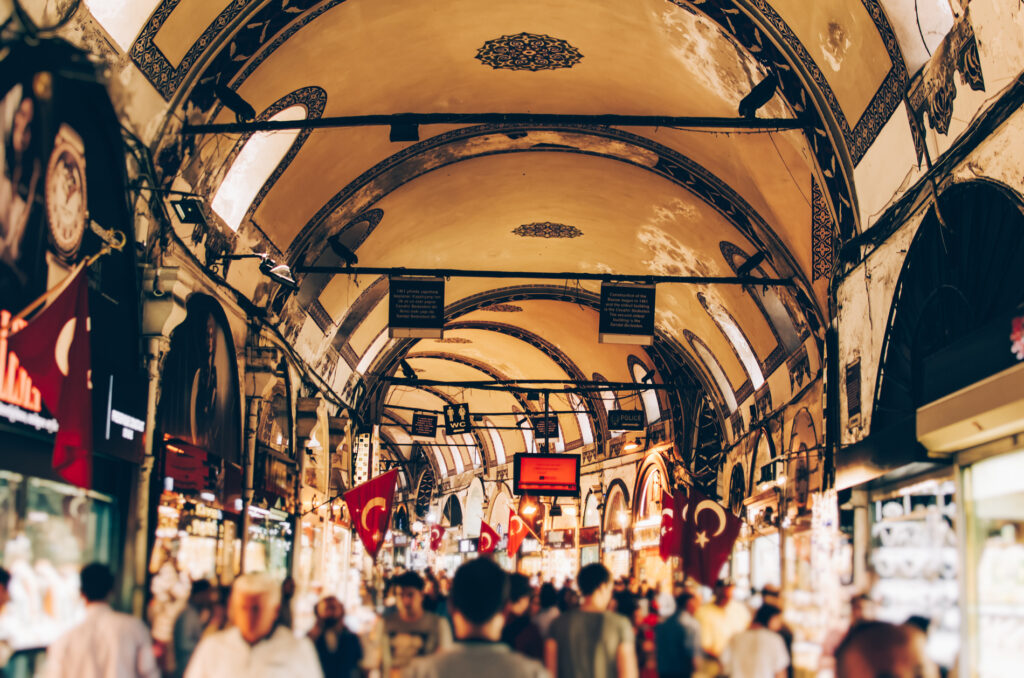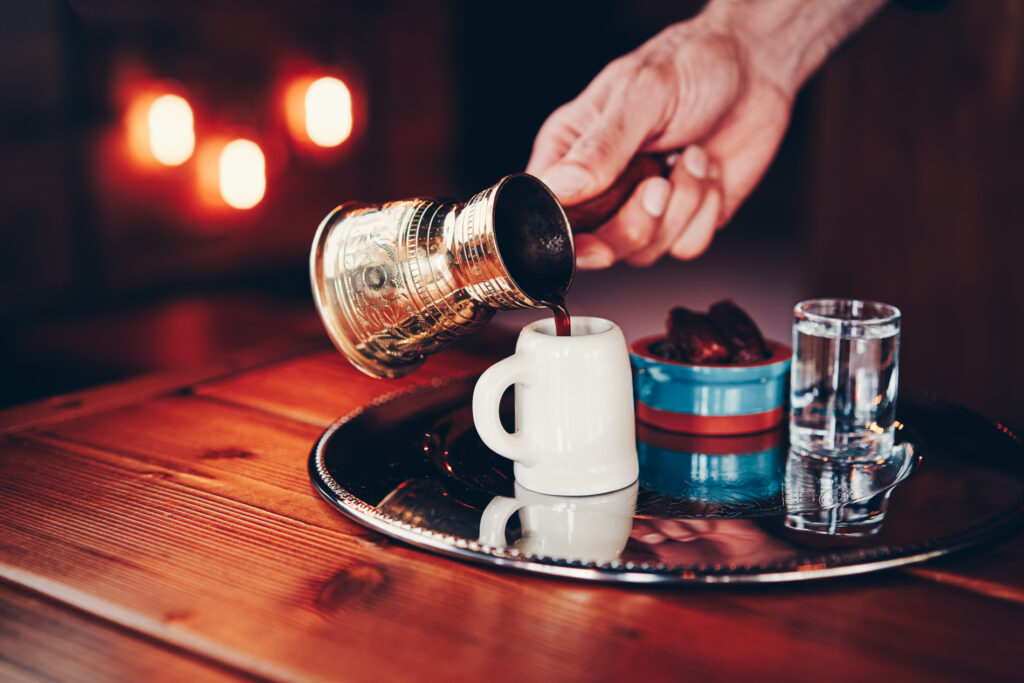The aficionado, the exhausted, the caffeine junkie, and the hipster are all drawn to the roasted scent of coffee. Bitter yet flavorful, robust yet filled with softness, the black grains are patiently ground and pressed until the perfect cup manifests. Yesterday’s “Fruit of the Devil” is one of today’s most popular beverages, tirelessly consumed by millions around the world in the morning, noon and night. If you’ve ever had to pull an all-nighter or get through a rough work week, coffee has been your helpmate, your pick-me-up, your friend.
But true coffee connoisseurs know there is more to the beverage than just a caffeine rush. If you fancy a delicious journey, keep on reading to discover the origins of coffee, from Ethiopia to Italy, through all the thrilling nuances of roasted flavors in France, Spain and more. So, pour yourself a cup of joe, sit back and savor the taste of black gold.
In the beginning, there was a shepherd, goats, and red berries
We’re all fascinated by origin stories, and coffee is not lacking in mysteries. Legend has it that a young Ethiopian shepherd was the first to discover the stimulating effect of the red berries, as his goats started wildly after grazing on them. Other myths say a forest fire burned down a bunch of coffee plants, imbuing the air with the scent of roasted beans. We wish we could have been there for that!
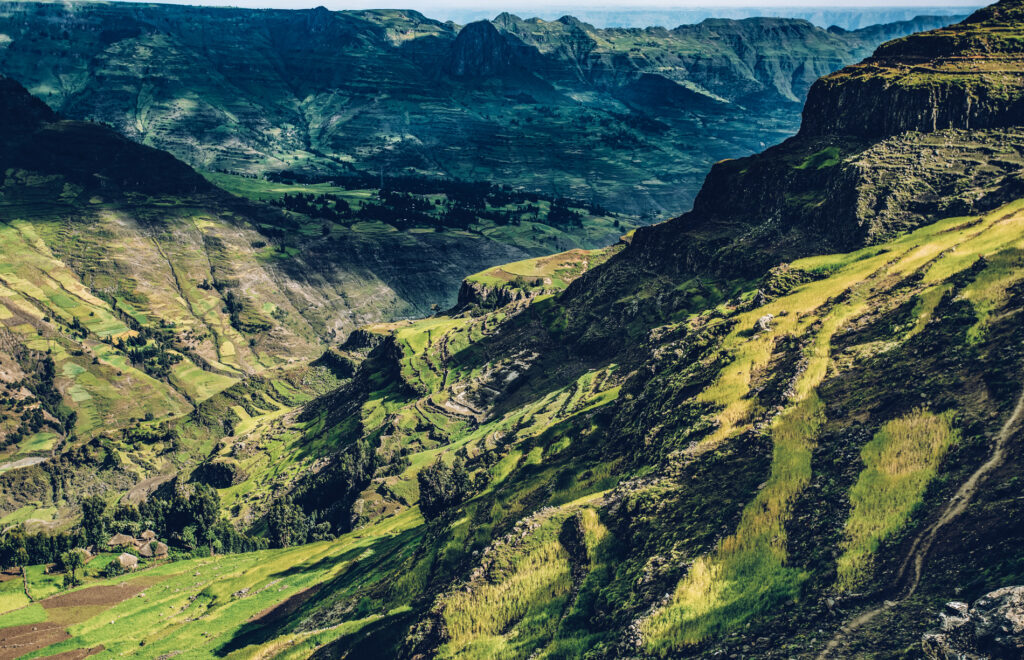
Beyond the rather dubious myths, scientists claim that the history of coffee did begin in Ethiopia, but way earlier than stated above. During prehistoric times, people already consumed coffee as a rejuvenating food, a quality that is reflected in its first name “kahwa,” which means “that which delights and encourages to soar.”

In the 15th century, coffee beans were already being exported from Moka, Yemen, to the Ottoman Empire, Persia, and North Africa. The drink quickly became the drink of choice in these Muslim nations, offering a sort of sober drunkenness alternative to alcohol—which is prohibited in Islam.
The western world got a taste for coffee in the 16th century, when the beans were introduced as a medicinal ingredient in Venice. But it was only in the 17th and 18th centuries that the drink started spreading in Europe.
From the plant to the cup
The two most common coffee plant varieties in the world are the arabica and the robusta, each with its own distinct flavors and nutrition profile.
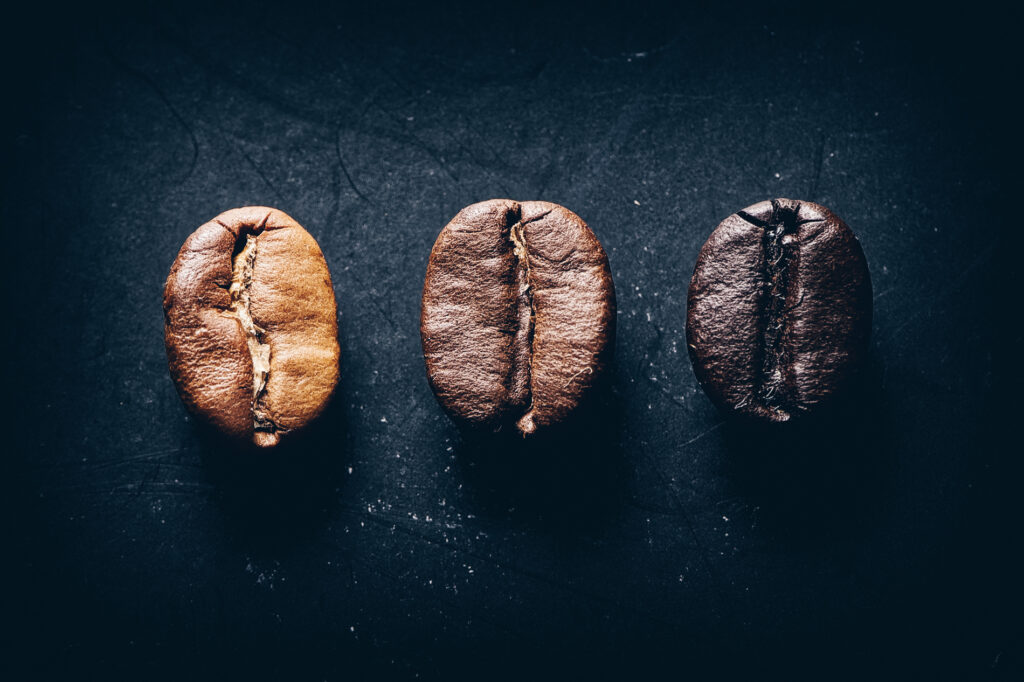
The Coffea arabica plant grows in higher altitudes and delivers a mild brew with a rich, strong, and slightly acidic aroma, with 0.8 to 1.5 percent caffeine levels. While it originated in Ethiopia, the majority of the current cultivation comes from Central and South America, on the East Coast of Africa, and in Asia, making up about 70 percent of the world’s coffee production.

The Coffea canephora (robusta) is a wild variety from Congo, in West Africa, growing at lower altitudes. Compared to arabica coffee, robusta beans offer a bolder, more bitter flavor with twice the caffeine content found in arabica.
Fun fact: The most expensive arabica coffee in the world is the Kopi Luwak, made from coffee beans collected from…the excrements of the Luwak, an Asian civet from Indonesia. Retrieved with the seed unbroken, the digestion process confers a unique taste, with prices from €500 to €1000 for two pounds!
Italian coffee: A story of passionate expertise
In Italy, drinking coffee is not a mere solitary pleasure on the go. It’s a social ritual that has existed since the very first coffee shop in Italy opened in St. Mark’s Square in Venice in 1683. But how did a country that doesn’t even grow beans become the mecca of coffee culture?
The Italians not only drank coffee, but they also refined it with their unique know-how, by innovating new extraction processes that differed from the initial Turkish-style brewing method. In 1948, Achille Gaggia designed the final pressure extraction technology, giving birth to the espresso as we know it today, with a higher concentration of aromas and a creamy and dense foam created by the air pressure.
Made from arabica beans, espresso is the backbone of Italian coffee, a brief but intensive delight sipped from small porcelain cups at all times of the day, at the counters of the renowned Italian bars.


The espresso (simply called “caffè”) comes in various forms, depending on taste:
- Classic espresso: a shot of espresso (about 1.1 oz.)
- Doppio: a double shot of espresso
- Ristretto: a reduced and thicker espresso (about 0.9 oz.)
- Lungo: a longer, less intense espresso with twice as much water
- Cappuccino: 0.9 oz. of espresso with ⅓ of skim milk and ⅓ of hot milk
- Macchiato: an espresso with a drop of milk
- Caffè con Panna: a hearty espresso with whipped cream on top
- Caffè Freddo: a sweet cold espresso whisked with ice cubes in a shaker
- Americano: espresso mixed with hot water
- Caffè corretto: espresso mixed with liquor (grappa, sambuca, etc.)
Besides the bustling bars becoming the temple of espresso, the invention of the Moka coffee maker, commonly called “macchinetta” (small machine), marked a major socio-economic turn, allowing this culinary art, then reserved for the wealthy, to be brought into all Italian homes.
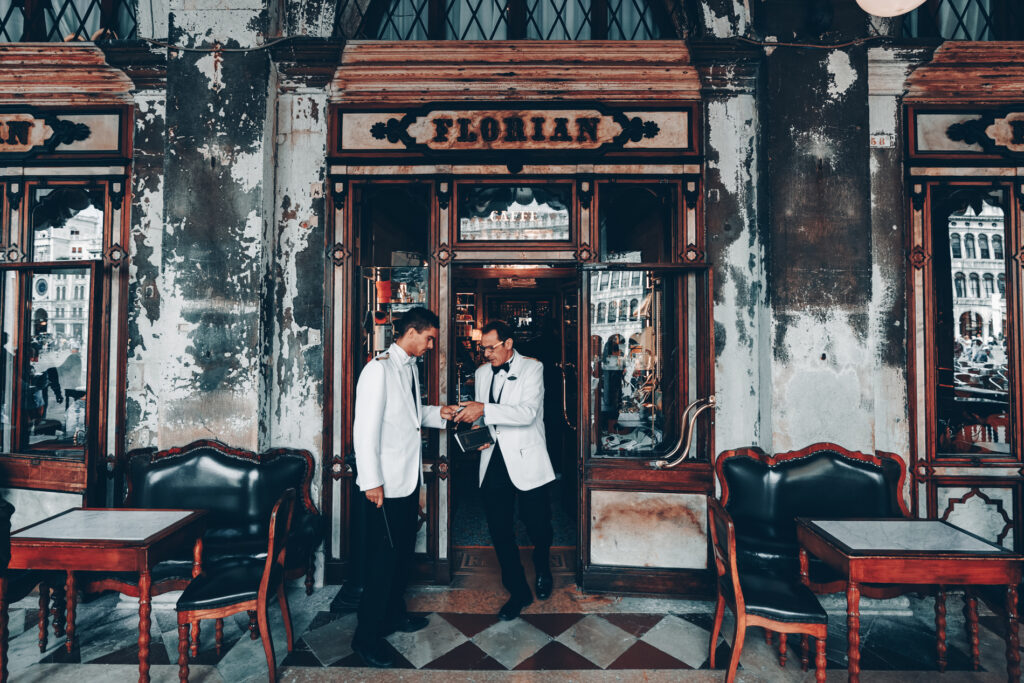
Looking for a memorable espresso shot? Head to Italy’s oldest coffee shop, Caffè Florian, which opened in 1720 in picturesque St. Mark’s Square. Sit on the red velvet-wrapped benches and sip an espresso with a pasticcini, as the opulent Empire-style decor transports you to a gilded Venetian world.
Neapolitan coffee: the pinnacle of Italian espresso
In Naples, the coffee culture takes a rather sacred turn. With a more intense roasting process, Neapolitan coffee stands out with darker beans, mixed with a certain amount of robusta beans. This gives the coffee a tighter flavor, similar to bitter chocolate, with distinctive toasted almond aromas.
Lever espresso machines are the coffee machines of choice in Naples’ bars, with the coffee being slowly and thinly extracted for about 30 seconds. At home, Italians use the cucumella, the Neapolitan coffee maker. Served in preheated thicker and smaller porcelain cups, a cup of water traditionally accompanies the coffee as an “aperitif” so to speak to prepare your tastebuds.
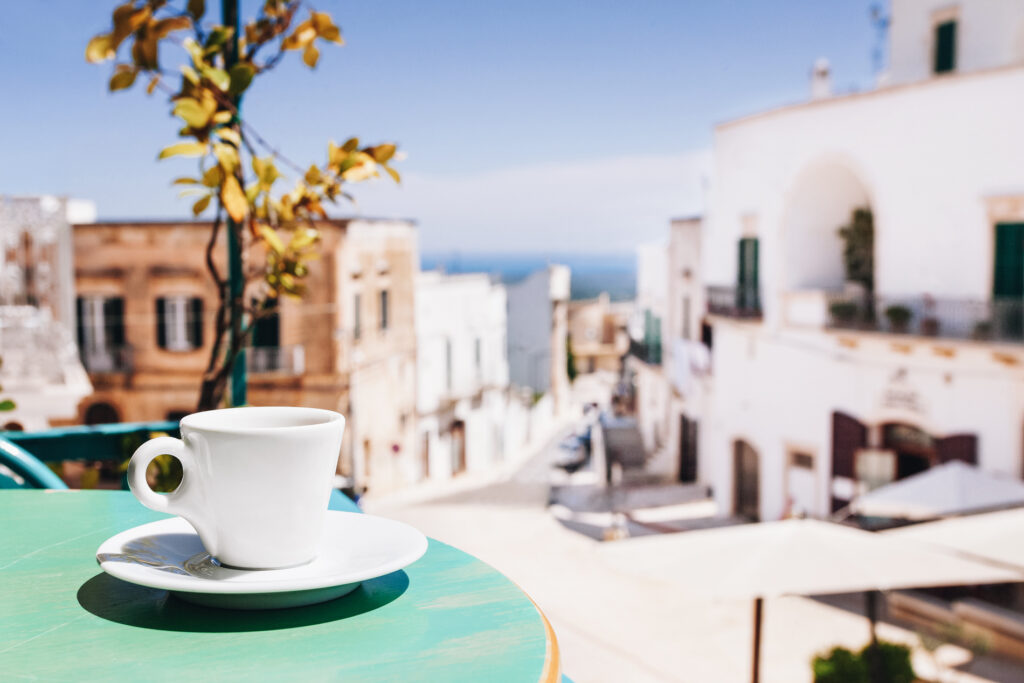
Besides the gustatory differences, some traditions make the coffee even more special in Naples, such as the caffè sospeso (suspended coffee) custom. Synonymous with sharing, it is an opportunity to offer a coffee to a stranger for whom buying it might be a luxury. So next time you’re in Naples, don’t forget to say “un espresso e un caffè sospeso, por favore!” to bring a cup of happiness to someone else.
It’s no surprise that Italian espresso became the norm in almost every European country, fully adopted over the years into a daily routine, with a preponderance of espresso drinks.
Espresso in the land of the savoir-vivre
French coffee is much more than a Parisian who dips a croissant in a cup of café au lait! In 1669, Turkish ambassador, Soliman Aga introduced coffee to the court of Louis XIV. And guess what? The king clearly disliked it and declared he preferred chocolate!
Nowadays, the bitter drink has been fully embraced within the art of living, even if a lot of French people still make you cringe by saying “expresso.” Just like in Italy, the coffee is always savored on the spot, whether it’s a petit noir (classic espresso) with pastries for breakfast, or a café allongé indulged at a bistro just after lunch.

There is no real French coffee per se, as espresso is widely consumed in the country, but with some variations such as café crème (with a layer of cream), café noisette (with a thin amount of milk, and not flavoured with hazelnut), or café allongé (equivalent to caffè lungo), all traditionally served with a square of dark chocolate.
However, the French press is purely a French invention, dating back to the 1900s, but unlike in Italy, manual coffee makers are not in vogue anymore and have been replaced by the pod or capsule coffee machine, the new favourite of French households.
Get your French fix in a traditional bistro-café at Le Bistrot du Coin in Paris. Take a seat at one of the cosy tables on the sidewalk and order a French espresso accompanied by a homemade chocolate crepe or caramel French toast.
Spain and its passion for milky espresso
Unlike other European countries, coffee spread a bit more slowly in Spain, with the market being completely controlled by the state until 1977. In the past, coffee beans were traditionally preserved with sugar, then burnt during roasting, giving a typical burnt flavour to Spanish coffee.
In the rest of the world, “Spanish coffee” often refers to carajillo, an espresso mixed with brandy and lemon zest. But the Spanish coffee ritual is much more than a pick-me-up originally used by Spanish soldiers in Cuba! Spaniards prefer to start their day gently with a café con leche (coffee with milk) and have breakfast a little later. Throughout the day, a cortado, an espresso with a non-frothy cloud of milk, served in a small glass, will be commonly sipped after any meal.
But when it comes to adding milk to coffee, preferences change from one region to the next in Spain. While the Basques prefer an ebaki, a very sweet version of café con leche, the Andalusians savor a nube or a sombra (90 percent and 80 percent milk, respectively).

For a hearty coffee break, head to Lolina Vintage Caffé in Madrid’s vibrant Malasaña district. Take a seat among the 1970s decor and psychedelic patterns, and order their brunch formula including a coffee, a croissant with jam, a bowl of tomatoes with oil, Iberian ham, and avocado.
Turkish coffee: Where it all started
By the 1500s, coffee had already become a commonly consumed beverage among the Ottomans, as the empire had long controlled the coffee market, with the world’s first cafe opening in Istanbul in 1555.
Turkish coffee plays an important role in many social traditions and adds more value to any moments shared with others, as expressed with “Bir fincan kahvenin 40 yıllık hatırı vardır” (“A cup of coffee has 40 years of memory.”) For centuries, visitors to homes are first served Turkish coffee accompanied by delicious Turkish delights.
With bitter and dense notes, Turkish coffee is covered with thick foam, all cautiously transferred into small cups from the “cezve” (Turkish coffee pot), where ground coffee is slowly infused. Just like Turkish cooking, Turkish coffee is drunk very slowly, especially towards the end of the cup in order to avoid swallowing the earthy part at the bottom. Just in case you drink that bit, wash it down with the water served with the coffee.
For an authentic experience, head to Şark Kahvesi in Istanbul’s historic Grand Bazaar. The rustic atmosphere—think colourful tapestries typical of Eastern Turkey—imbues the coffee, which is served in a copper Turkish pot, on heated sand. It’s one of the best Turkish coffees in a town where coffee is a way of life.
